555 Core
The first step for 20-pin 555 timers is to improve the timer core itself.
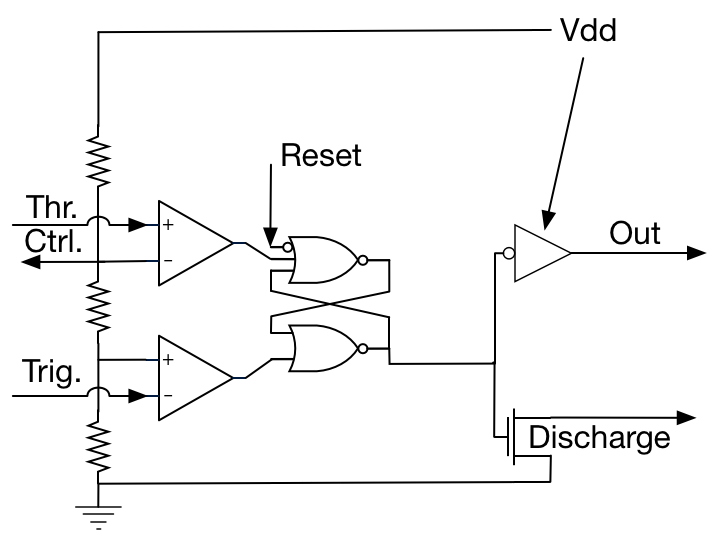
Recharge Pin
Adding a recharge pin driven by the same source as the existing discharge pins opens up some interesting possibilities.
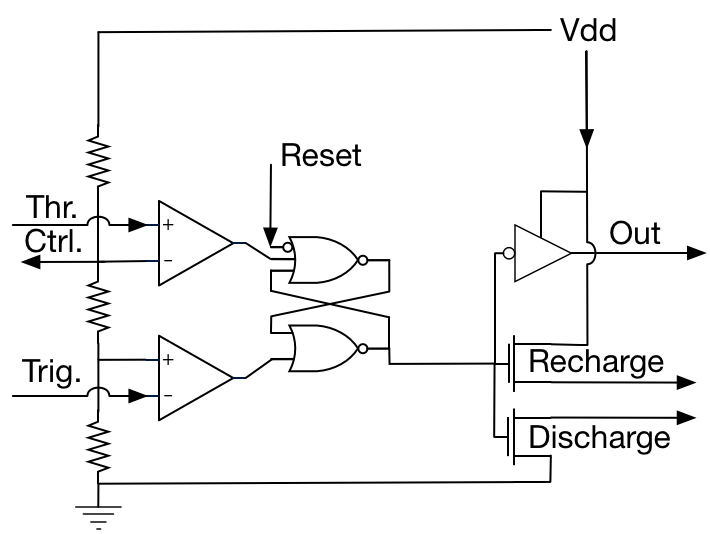
For the simple RC oscillator driven from the output pin, two pins are now available to drive LED’s which will flash alternately. This oscillator will be relatively stable as the timing components are not sensitive to the loads on these separate output transistors.
If instead we charge and discharge the capacitor with these pins we can use a potential divider or potentiometer to set the mark to space ratio of the output of the timer
We can also short all three output pins together to increase drive capacity.
Pull Up on Reset Pin
A pull-up resistor on the reset pin prevents strange behavior when the pin is left disconnected.

Band Gap Voltage Reference Pin
The 555 timer is a kit of general analog and digital parts connected internally for timer and oscillator applications. We see these components everywhere in modern IC’s: comparators (e.g. sense amplifiers in memories), flip-flops (the basis of SRAMs and CPU registers), and high-power output buffers (e.g., class D audio). Fifty years ago there wasn’t pin-count or budget for a component that is now ubiquitous alongside these building blocks: the Band Gap Voltage Reference.
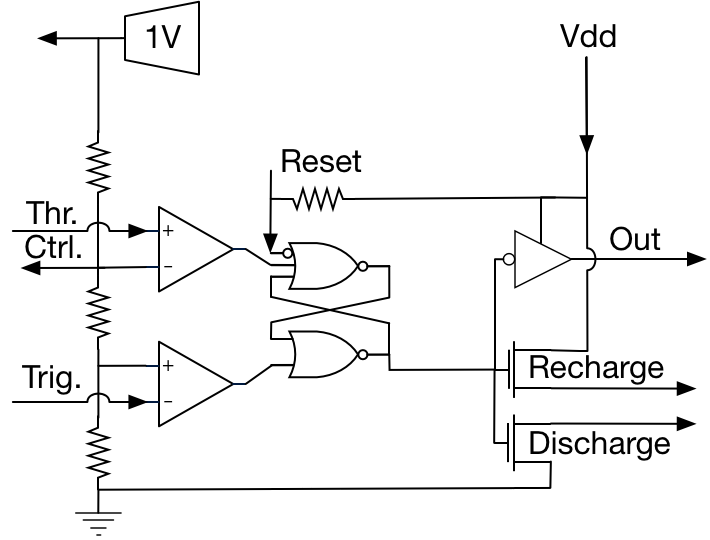
Replacing the voltage source of the divider network and R/C network with a 1V reference improves on the original 555 by further isolating the time constants established by these networks from changes in the power supply. The usual simplified analysis of 555 timer sensitivities doesn't take into account the difference between the two current legs: the external one which integrates all fluctuations in the power supply during a cycle and the internal one where comparators only sample the divided power value at a particular point in the cycle. This makes the timing sensitive to glitches and noise on the power supply - something that is mitigated if the currents are sourced from a voltage reference.
One less Pin
Another source of noise can be avoided by removing the external connection to the resistor divider network. This pin is mostly used for frequency, pulse width or pulse position modulation which can be achieved in another way: The 1V timing source lowers the timer trip voltages (1/3V, 2/3V). This means that very wide timer modulations can be achieved with external currents applied directly to the charging capacitor.
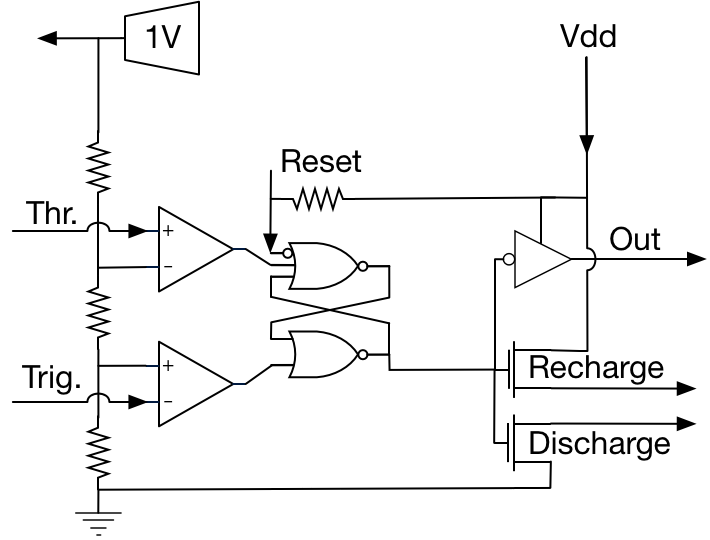
1V push-pull Output Pin
A popular astable circuit uses a single resistor on the output. By providing an additional output that switches between ground and the 1V reference, this astable with 50/50 mark to space ratio can be easily achieved freeing up the full swing output pins from timing duties.
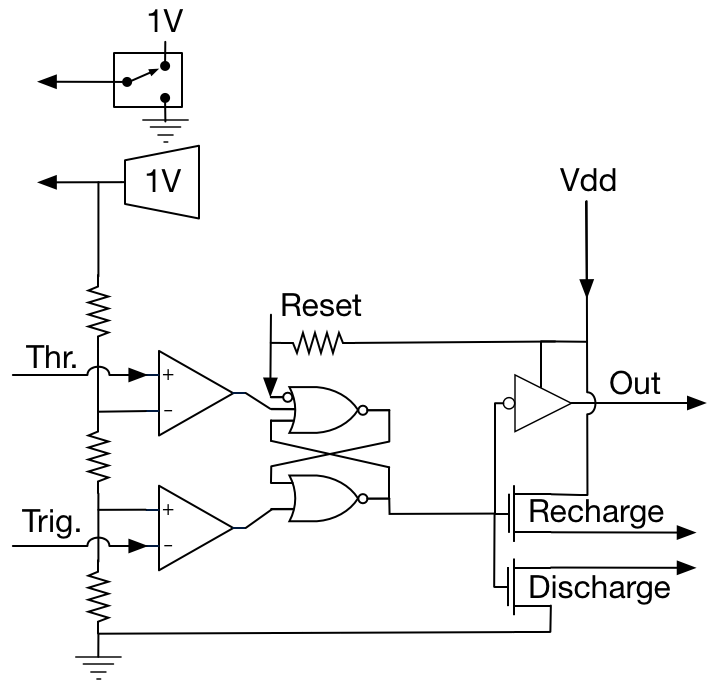
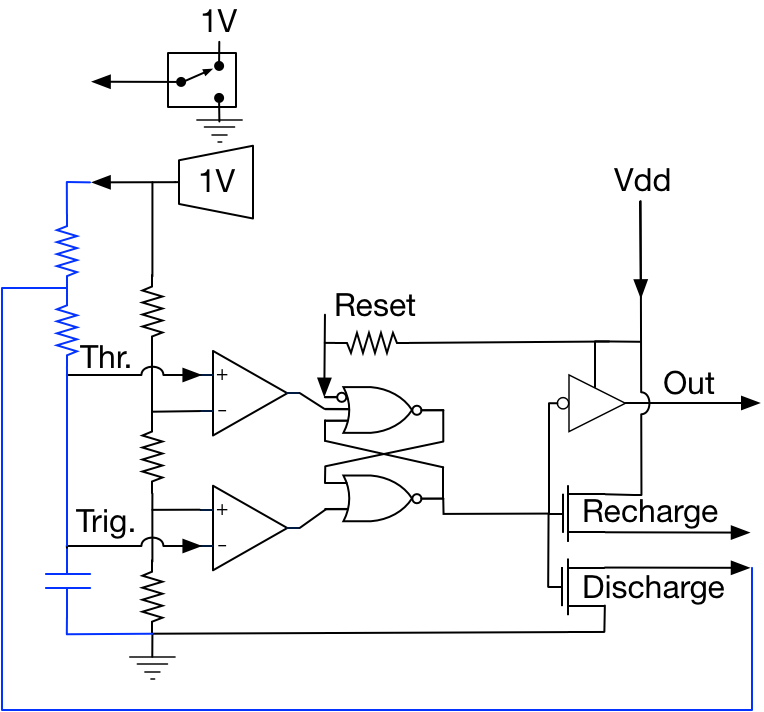
Constant Current Source Pin
We can restore the function of the 9th pin originally cut from the 555 timer design: a constant current source - in this case 100uA. This source produces a linear ramp on the charge capacitor and a sawtooth waveform - without additional components.
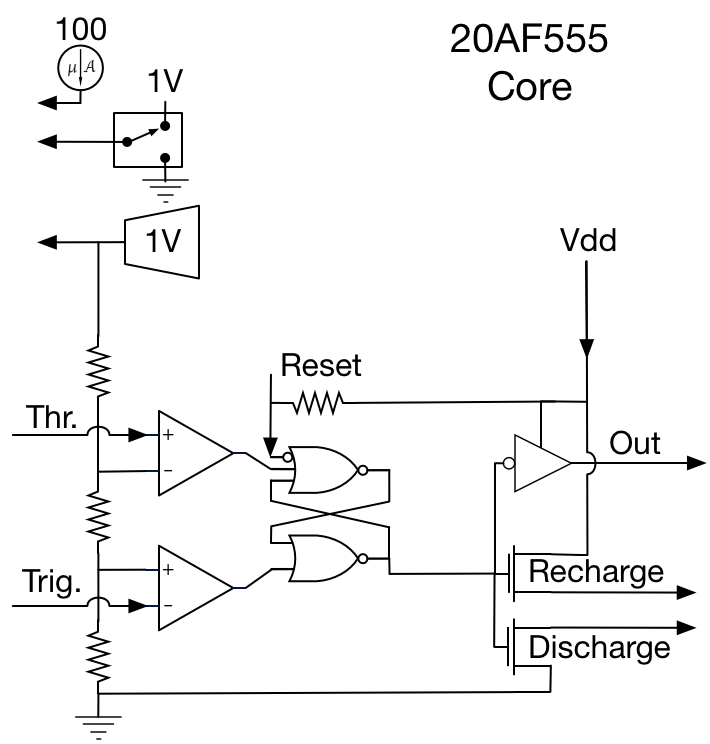
Core Summary:
- 4 more pins: Constant Current, 1V, 1V push-pull, recharge
- 1 less pin: Modulation input
- This leaves 9 available pins in a 20-pin package.
The core itself is relatively small in modern CMOS processes and sophisticated CAD tools are used that allow for reuse of cores. Many application-specific variants using the core can be made economically thereby reducing the risk of betting the company on a single design. The 555 timer was the only major hit of the handful of other important related IC’s designed at Signetics.
Read more » Adrian Freed
Adrian Freed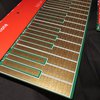

There isn't much interesting to say about the IC-level design - it is just putting together well-exercised manufacturer library elements - no transistor-level design.